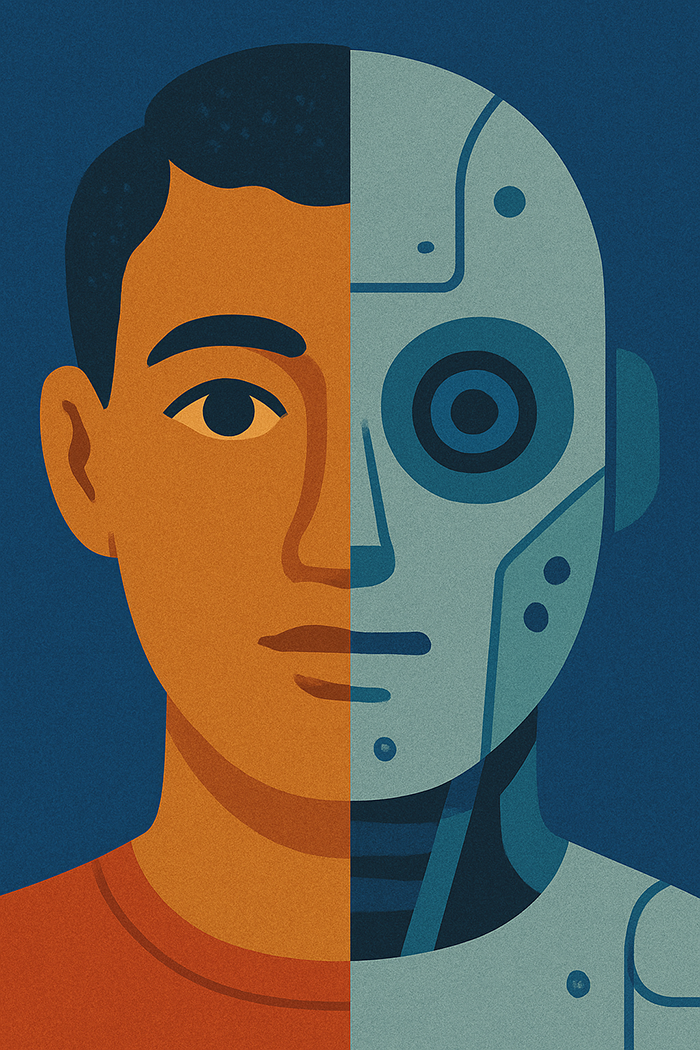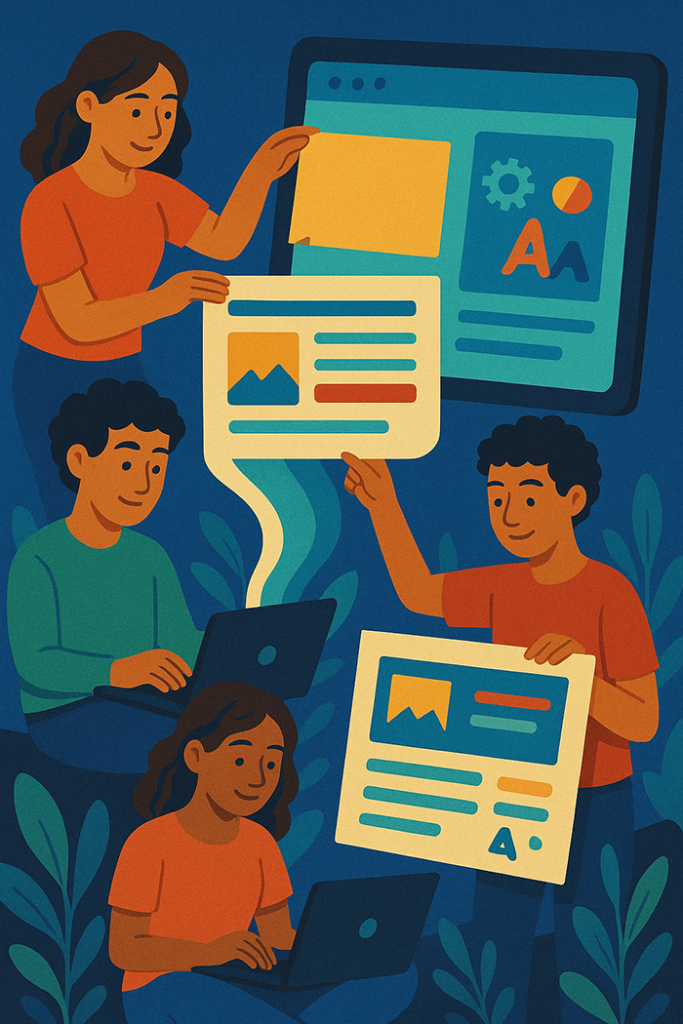Why Humans Still Matter: The Irreplaceable Role of Human Insight in Web Design

Web design has evolved over the past decade. AI can now generate layouts, write copy, suggest color palettes, and even analyze user data at speed. It makes the process efficient, but efficiency won’t build a connection.
A great website isn’t just about its functions. It reflects your brand, builds trust, and makes people feel understood. That takes human insight. It’s the intuition and empathy behind every color choice, every word, every interaction.
In this article, you’ll see why human input matters, how it shapes culture and storytelling, supports empathy and ethics, and drives results through real-world examples.
Culture and storytelling need a human touch
“People do not buy goods and services. They buy relations, stories, and magic.” — Seth Godin
Culture and storytelling shape how people see your brand and why they care. AI tools follow patterns from past data. They can spot trends, but they don’t grasp context or social cues. You can tell when a word feels wrong, when a layout feels awkward, or when an image might turn people away.
Storytelling is at the core of this. A website is a narrative about why your business exists and why it matters to someone. You create stories that show real values and purpose. AI can write copy, but it usually lacks a real, human voice.
Look at Nike’s “Dream Crazy” campaign with Colin Kaepernick. Nike took a clear stand on social issues, knowing it would split opinions but also create a strong, lasting connection. The campaign was bold and emotional. It showed that Nike stood for something bigger than sports. It turned a simple ad into a story people still talk about.
When you translate that to a website, it means showing what you stand for in every headline, image, and interaction. It’s about weaving those values into the whole experience, not just a single campaign.
Dove’s “Real Beauty” campaign is another example. Dove used women of different shapes, ages, and backgrounds. The campaign started a real talk about self-image. It made people feel seen and accepted. It built trust and changed how people related to the brand.
A website that reflects this same approach doesn’t rely on generic photos or stock slogans. It feels real. Visitors know right away that the brand respects them and shares their values.
Patagonia took this even further with its “Don’t Buy This Jacket” ad. Right in the middle of the shopping rush, they asked people to pause and think before buying. The ad supported their mission to protect the environment and cut waste. It was risky, but showed they put purpose before profit. That honesty built deep loyalty with people who share those values.
For a website, this means being clear and honest about your mission. It means not hiding behind buzzwords or shallow promises but showing people what you really care about. These brand stories prove that strong storytelling doesn’t just live in ads, it lives in every detail of a site.
These stories prove one thing: strong storytelling comes from human insight. While stories pull people in, they also lead to the next part of good design: empathy and ethics.

Empathy and ethics guide strong design
“It’s not about technology. It’s about people.” — Don Norman
Empathy is a designer’s real strength. It means thinking about what it feels like to use your site as a real person, not just looking at data. No algorithm can do that.
People come to your site in different moods and situations. Some use screen readers. Some need high-contrast text. Many visit while stressed or in a hurry. Humans can design for these moments so the site feels calm and supportive instead of cold or confusing.
Spotify is a great example. The site and app use friendly language and clear navigation, so you always know where to go. Even when you’re quickly looking for a song before driving or making a playlist for a cousin’s wedding, the experience feels easy and personal. The design stays clean and keeps choices simple, which helps you feel relaxed, not rushed.
Apple focuses on clarity and respect. The clean layout and strong visual order help you move without getting lost. Features like VoiceOver, high-contrast options, and clear labels show real care for accessibility. Apple avoids jargon and keeps the copy simple. You don’t get overloaded with choices. Instead, you’re guided to what matters most. This balance makes the site feel honest, not just shiny for show.
Ethics matter as much as empathy. Privacy, fairness, and honesty don’t come by default with AI. Tricks like hiding unsubscribe links or sneaky charges might boost clicks short term, but they ruin trust and lead to backlash.
A good designer knows when to stop and think. Ethical design means being open about data, giving real choices, and respecting people’s time. When you lead with empathy and ethics, your site feels safe and friendly. People stay longer and come back because they feel understood. Without these values, even a great-looking site feels empty.
Human insight in action: real-world examples
Many companies show how human insight can turn design from technical to memorable.
Airbnb is a strong example of user-focused design shaped by real research and empathy. Before a major revamp in 2014, the team didn’t just run surveys or look at heat maps for most user feedback. They visited hosts in their homes and sat down with guests to hear what actually mattered to their experiences. They learned what builds trust and what makes people hesitant. These insights led to updates like detailed profiles, verified reviews, professional photos, and personalized recommendations. Rates improved. Bookings went up by 20%, and mobile reservations rose by 50%. This growth came from listening deeply, not just relying on automated guesses.
Headspace is another strong example of design shaped by empathy and real user needs. Before new updates, the team talked to people who were new to meditation. Many felt nervous or didn’t know where to begin. These talks shaped Headspace’s warm words, friendly images, and simple steps. Every detail, from the first welcome screen to daily reminders, helps lower stress and makes people feel supported. Every detail, from the first welcome screen to daily reminders, helps lower stress and makes people feel supported. This human focus turned meditation from something scary into a habit people enjoy and trust.
These examples show that human insight doesn’t just fix problems, it builds loyalty and connection. When design feels human, it does more than work well. It makes people feel understood and respected.
A partnership approach works best
“Design is an expression of purpose. It may, if it is good enough, later be judged as art.” — John Maeda
So, where does AI fit into this picture? AI has real benefits. It can handle repetitive tasks like image resizing, code fixes, or checking accessibility. It can also show patterns and suggest improvements quickly. But it should be a support tool, not the one making final decisions.
Design works best as a partnership. Only you can make people feel seen and valued. The choices you make shape how a site sounds and feels. AI can handle the technical details and free you up to focus on the big questions. Together, they help build websites that feel clear, honest, and trustworthy.
It needs someone to ask, “Does this feel honest?” and “Will this make people feel welcome and understood?” Only you can answer these questions with real care.
AI tools will keep getting faster and offer new features each year. But human insight will always be the piece that makes a design connect. It shapes work that respects people, builds trust, and keeps them coming back.
Conclusion: The irreplaceable human touch
We’re in a time of constant automation, and now more than ever, the human touch is what makes design memorable and real. It turns a website from something that just works into something people trust and want to come back to.
You bring the insight that helps people feel seen and valued. Your choices shape the voice, tone, and feel of every part of a site. AI can help with tasks, but only you can build the connection that lasts.
When you lead with human insight, you create design that respects people and keeps them coming back. That is what makes a website meaningful.
Posted in: AI, Marketing, Web Design, WWW Learning Center
Comments are closed.
Latest & Greatest
- How to Prepare Your Website Content
- How to Fix Common Website Bugs
- Security Enhancements for Website Checkout
- How To Write Content Geared Toward AI Search
- How to Recover a Broken Website
- Designing for Trust: How to Build Credibility in Your Website
- Why Humans Still Matter: The Irreplaceable Role of Human Insight in Web Design
